The Nordic region—with its notoriously harsh winters, freezing temperatures, and challenging road conditions—has historically inspired automotive manufacturers to create vehicles uniquely adapted to cold climates. These specialized cars, often exclusive to countries like Sweden, Norway, Finland, Denmark, and Iceland, come equipped with enhanced traction control systems, heated components, reinforced insulation, and even specialized engines designed to perform reliably in sub-zero environments. In this article, we explore a distinctive selection of 15 vehicles specifically tailored for navigating the extreme Nordic winters—cars that not only exemplify engineering ingenuity but also showcase how exceptional challenges can lead to extraordinary automotive solutions.
The automotive world is vast, dynamic, and full of surprises—particularly when it comes to cars uniquely tailored for a single nation’s roads.
While major automakers typically design vehicles with global appeal, occasionally they craft models intended exclusively for one specific country’s market.
Factors such as stringent regulatory standards, distinct consumer preferences, cultural identity, or economic strategies often dictate such niche creations.
In this article, we dive into 15 fascinating examples of cars that never ventured beyond their homeland, uncovering the intriguing reasons that kept their wheels firmly rooted in just one nation.
Factory diesel sedans have long held a special place in automotive history, often fondly remembered for their unmistakable tractor-like rumble and legendary dependability.
Despite their noisy idling and agricultural acoustics, these diesel-powered machines earned a loyal following due to their exceptional durability, fuel efficiency, and impressive mileage potential.
From daily commuters seeking robust practicality to automotive enthusiasts appreciating the charm of longevity, these sedans became iconic symbols of relentless reliability.
Join us as we revisit 15 memorable factory diesel sedans that, despite sounding more at home on a farm than a freeway, simply refused to die.
The day was Friday, August 19, 1955. Colleen Curtis, 20, received the keys to a brand-new black Chevrolet two-door. It was grand-opening day for Ben Redd Chevrolet at 335 North Main Street in Logan, Utah. Colleen was having an eventful era in her life; her wedding had taken place just a few months earlier and, the previous year, she had taken a job at Mountain Bell as a telephone operator. Her new car retailed at around $1,900. A photo of Colleen’s happy day was featured in The Herald Journal newspaper three days following her car purchase.
This August will mark the 70th anniversary of Colleen’s key handoff. She and I have a little bit of a connection: A few years ago, I told the story of my first car, a 1986 Chevrolet Celebrity. My mom and dad bought that car new on April 19, 1986, from Axtell Chevrolet in Logan, Utah, which was what became of Ben Redd Chevrolet. I recently decided to dig a little deeper into some history of dealerships in Logan, and I ended up on a journey of great discovery.
This falls in line with my prior “classic building” stories that some of you liked about my great-grandfather’s 1923 service station and my visit to Bob’s Sinclair in rural Kanosh, Utah.
Origins of 335 North Main Street
A January 24, 1947, story from The Herald Journal announced the opening of the Humphrey and Evans Motor Company. “The new building is modern and complete,” the story said, “Representing investment of about $50,000. Constructed of tile and cinder block, it has a spacious showroom with a floor finished in marble, a parts room, office upstairs finished in knotty pine, and a shop in the rear. The showroom is recognized as one of the most beautiful in the state.” For its first several years, the Humphrey-Evans Motor Company sold Hudson vehicles.
Ben Redd Chevrolet Takes Over
The 1950s were a time of postwar optimism – an era of prosperity, an economic boom and thriving car culture. Car ownership became a rite of passage and a status symbol for people like Colleen Curtis. Redd Chevrolet took over the Humphrey-Evans dealership location in mid-1955 and rode the wave, selling many iconic vehicles like Bel Airs, Task Force trucks and Corvettes.
Just about five years after Colleen bought her car, in January 1960, the dealership changed ownership to a Mr. Ellis Axtell. A month later, operations at 335 North Main were closed, and Axtell Chevrolet relocated to 1475 North Main (the former location of an equipment building). The move was logical for a lot of reasons: Most notably, the original location had become a hub of traffic and industry with limited parking. The new location – at the time, on the outskirts on the north end of town – offered lots of space. “Inspect the new enlarged facilities and view the large selection of new 1960 Chevrolet cars and trucks. Remember, parking is no problem at Axtell Chevrolet,” an advertisement from February 10, 1960, said.
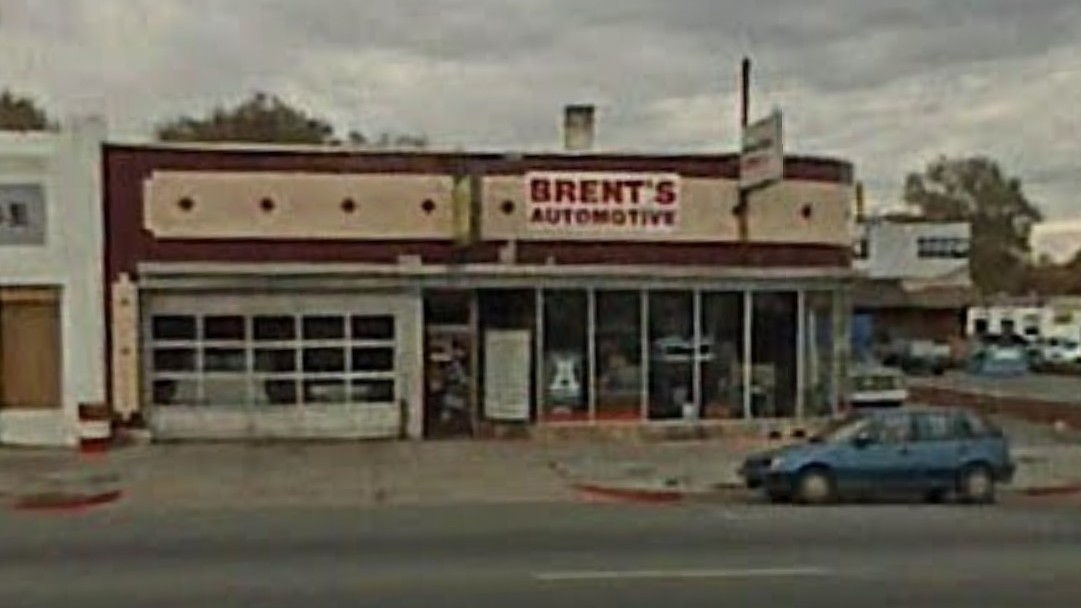
Evolution and Decline
Now that Chevrolet had moved its operations, the original 335 North Main location became home to a number of different businesses in the decades that followed. I remember my uncle saying he worked a speed shop there in the 1970s. It went by a few names, including Custom Muffler & Speed. The facility fell into some disrepair and became surrounded on all sides by more modern infrastructure as development ensued. Main Street, too, became too busy to allow for easy entry or exit to the property, so its days were numbered.
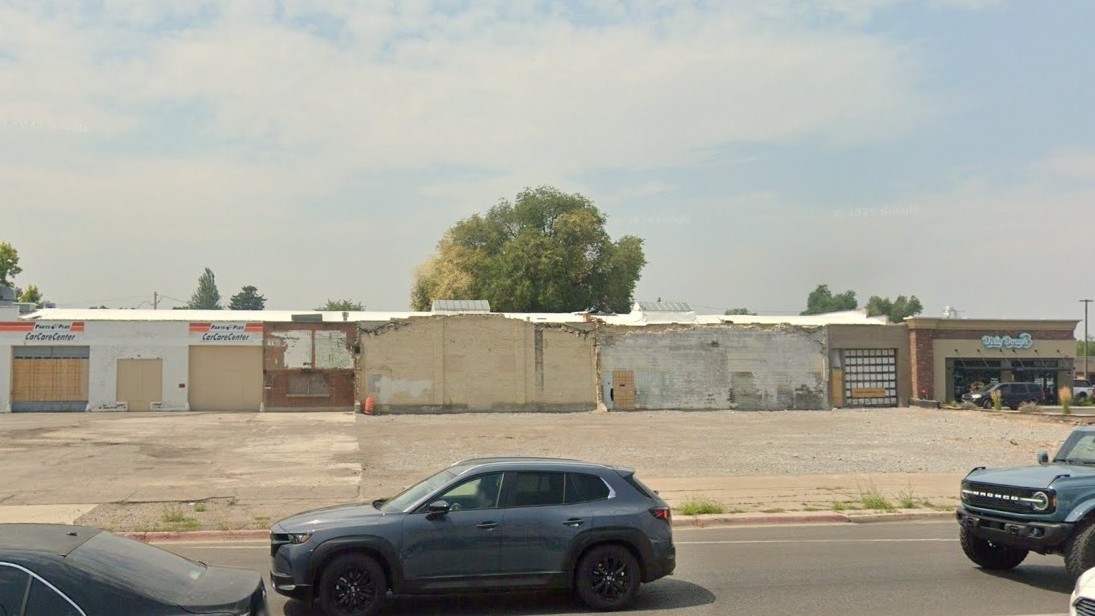
Google Street View chronology shows that the once-glamorous 1947-era showroom was bulldozed sometime between November 2021 and September 2022. As of the most recent image taken in August 2024, it was an empty lot – a quiet reminder of the many exciting automotive stories over the years.
Tribute to Colleen
As for Ms. Curtis, since the photo of her in The Herald Journal was what prompted this story: Colleen lived her entire life in Logan, Utah, and eventually pursued a career in real estate.
When she passed away on December 28, 2000, she left behind three children, 14 grandchildren and five great-grandchildren. What a great legacy! And, as it turns out, great taste in cars.
As you may have learned back in February, Bugatti has a long history with the horological industry. Since 2019, the French company has been working with the watchmakers at Jacob & Co. Their newest collaborative effort, the Calandre (which translates to “radiator grille”) is a little different because it’s not only a table clock, but it also was made with the help of another company: Lalique.

You classic car fans out there are probably familiar with that last name. Frenchman Rene Lalique made a variety of glass automobile mascots/hood ornaments in the early 20th century, such as “Victoire” (“victory”) and “Tete d’Aigle” (“eagle head”). He was also known for his clock designs, many of which featured two figurines leaning toward each other over the dial in the middle. For the Calandre clock’s case, the company bearing Lalique’s name poured molten crystal into a mold, cooled it, then spent months sharpening the edges, enhancing the texture, and polishing it. The two figurines are Dancing Elephants, an homage to both the Bugatti Type 41 Royale, which had an elephant on its radiator cap, and the sculptor Rembrandt Bugatti, Ettore Bugatti’s brother. The trunks of those two Dancing Elephants draw the eye to the 30mm red gemstone at the top, which Jacob & Co. made nearly round with 288 facets and its patented Jacob Cut.
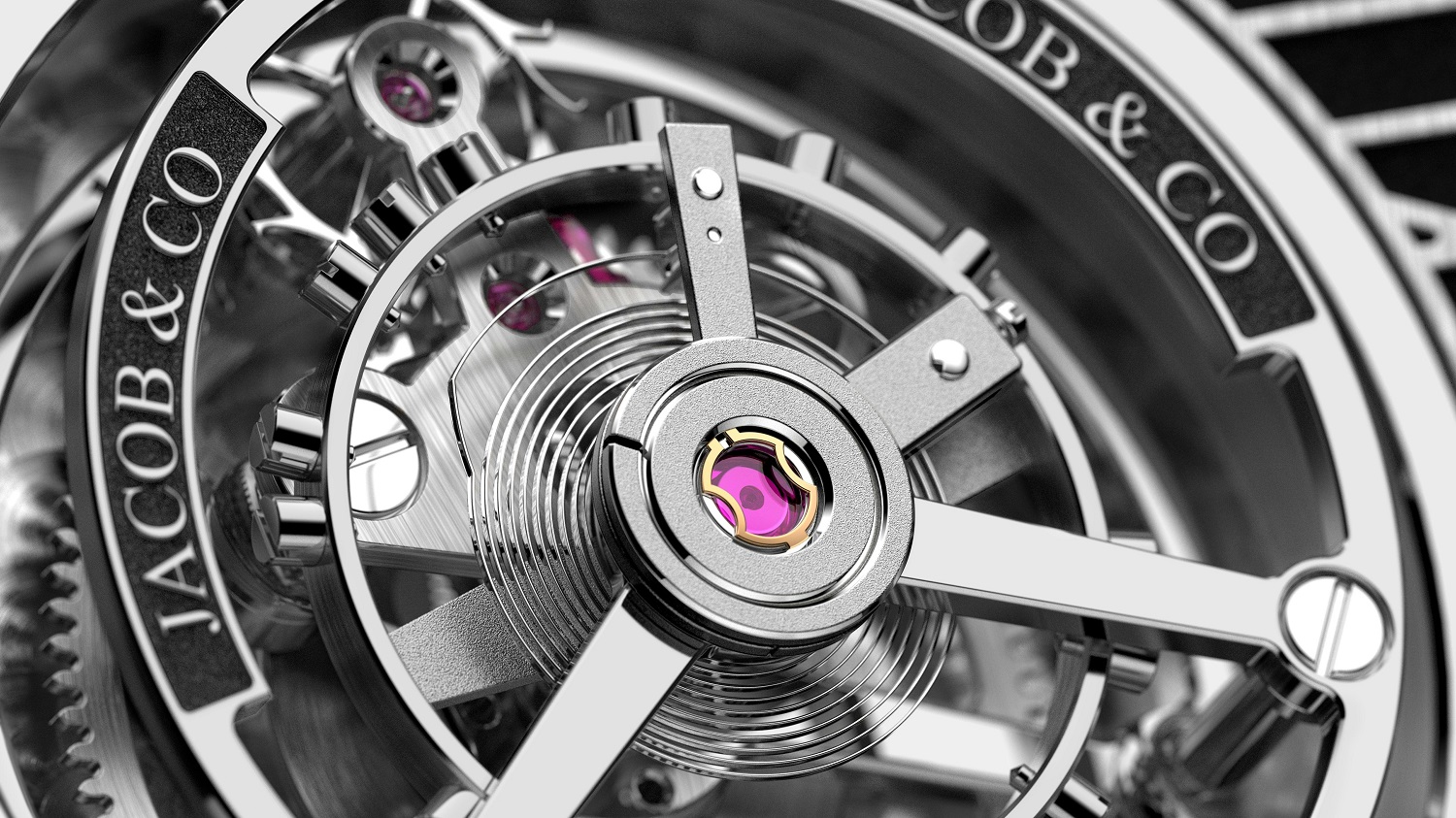
Bugatti’s signature horseshoe grille features the red “Bugatti Macaron” at the top and is filled with geometric mesh that serves as the dial for the rhodium-finished hands of the clock itself. The flying tourbillon directly below connects this timepiece to the V16-powered Bugatti Tourbillon hypercar while also doing what tourbillons were designed to do: maintain accuracy in clocks and watches in a fixed, vertical position. Jacob & Co.’s manually wound caliber JCAM58 movement has an eight-day power reserve, which can replenished by inserting a special key at the back of the clock.
Like any Bugatti, the Calandre will be exclusive and expensive: only 99 will be produced, each at a price of $240,000. It brings a whole new meaning to the phrase “Time is money.”
Featured on AutoHunter is this restored 1970 Mercedes-Benz 280SL, which has a Bosch fuel-injected 2.8-liter I6 mated to a four-speed automatic transmission. Finished in silver and equipped with a black convertible top over a black vinyl interior, this W113 SL is now offered by the private seller in Illinois with service records, spare tools, a jack, and a clear title.
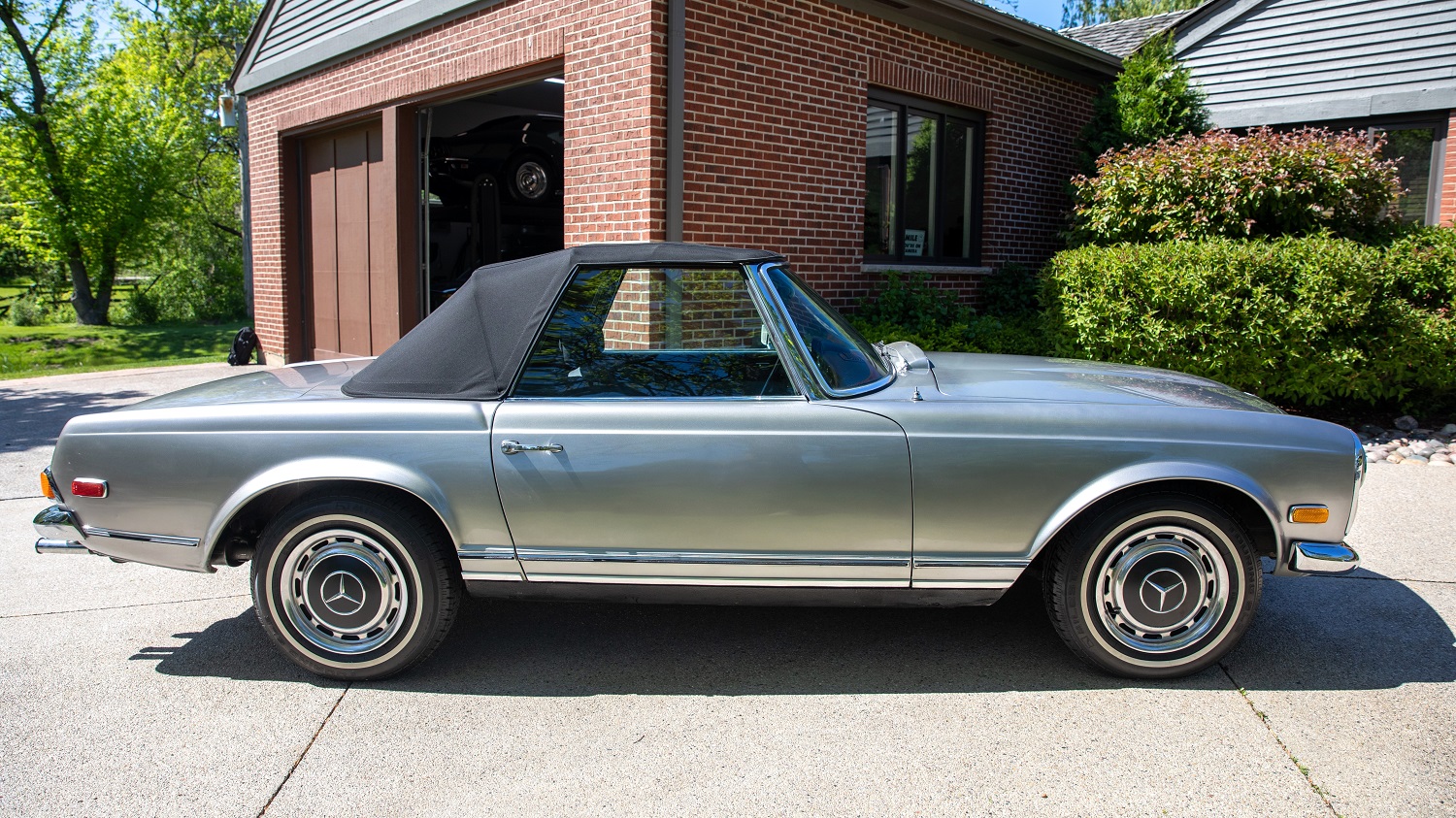
The silver body of this SL features chrome bumpers with black guards, chrome brightwork, a driver-side mirror, and a pair of rear exhaust finishers on the passenger side. A black soft top with a plastic rear window protects the passenger compartment from bad weather; it can be stored under a body-color tonneau cover.
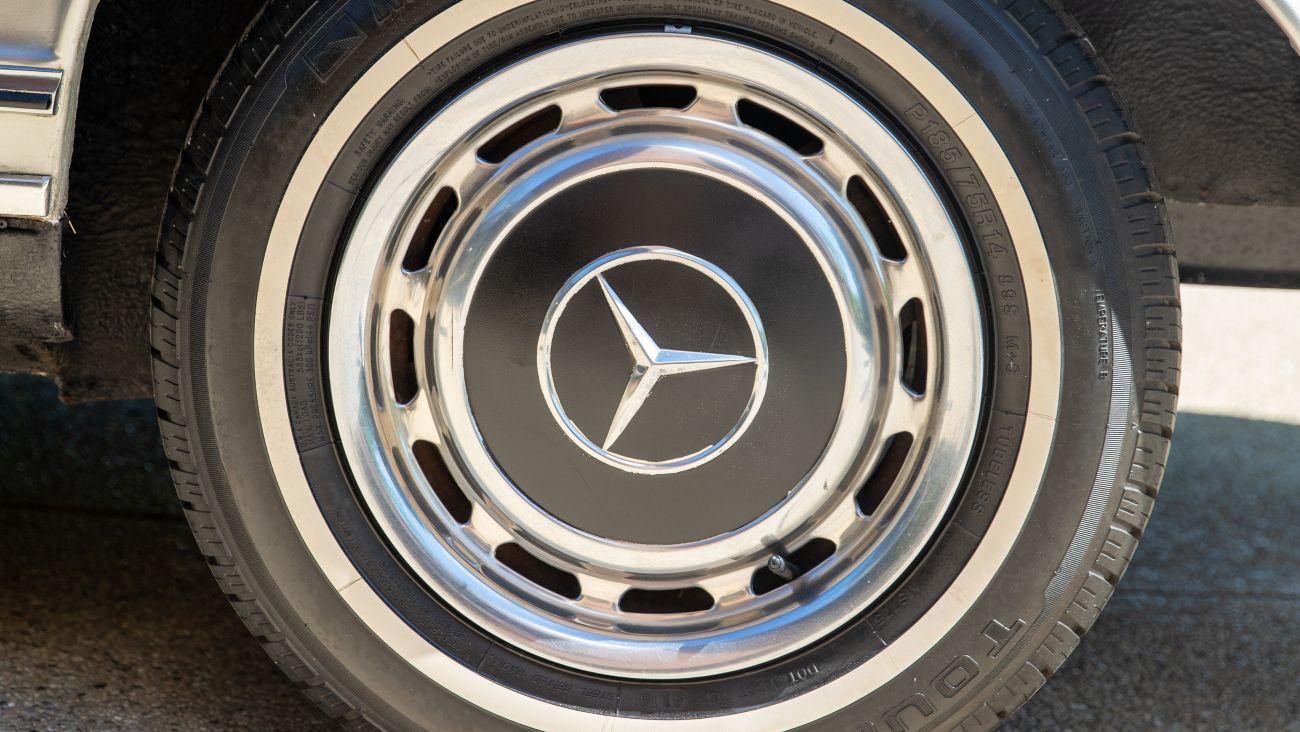
A set of 14-inch wheels with Mercedes-branded covers and 185/75 Milestar Touring whitewall radial tires help this SL cruise down roads and boulevards.
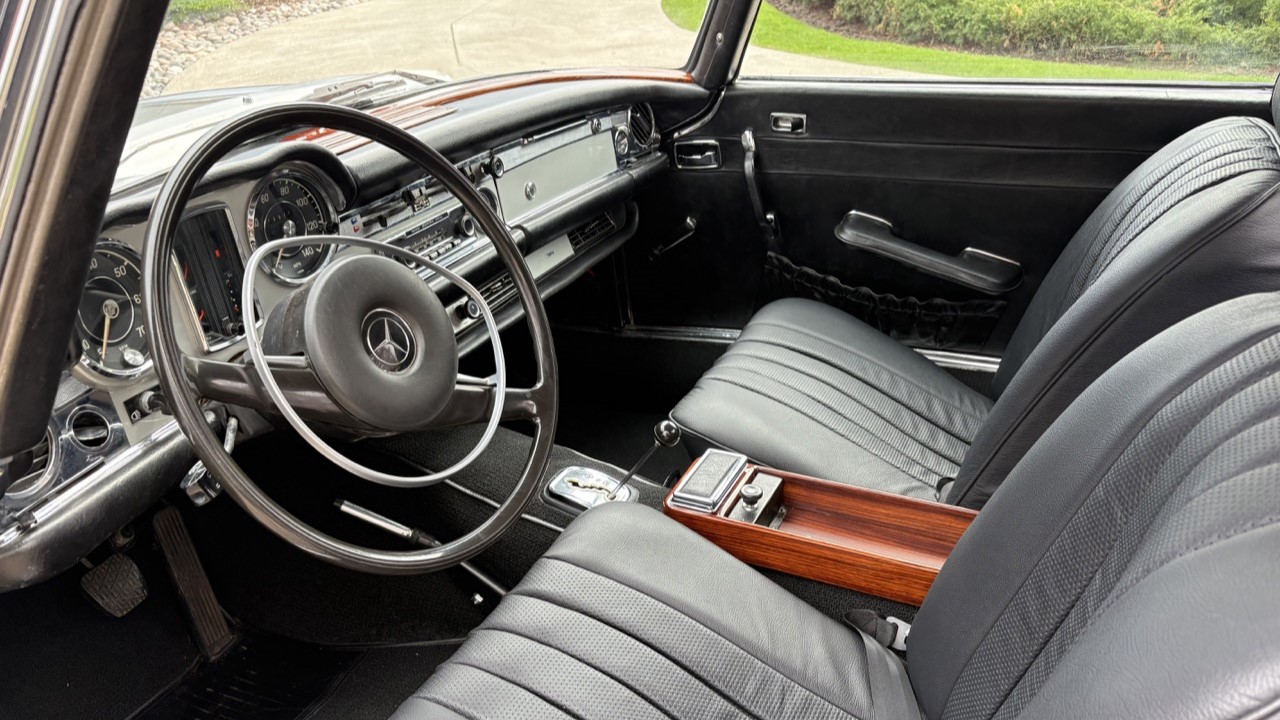
The cabin offers black vinyl bucket seating for two. Surrounding features range from power steering, woodgrain trim, and air conditioning to a Becker Europa AM/FM stereo and Craig/Pioneer 8-track player.
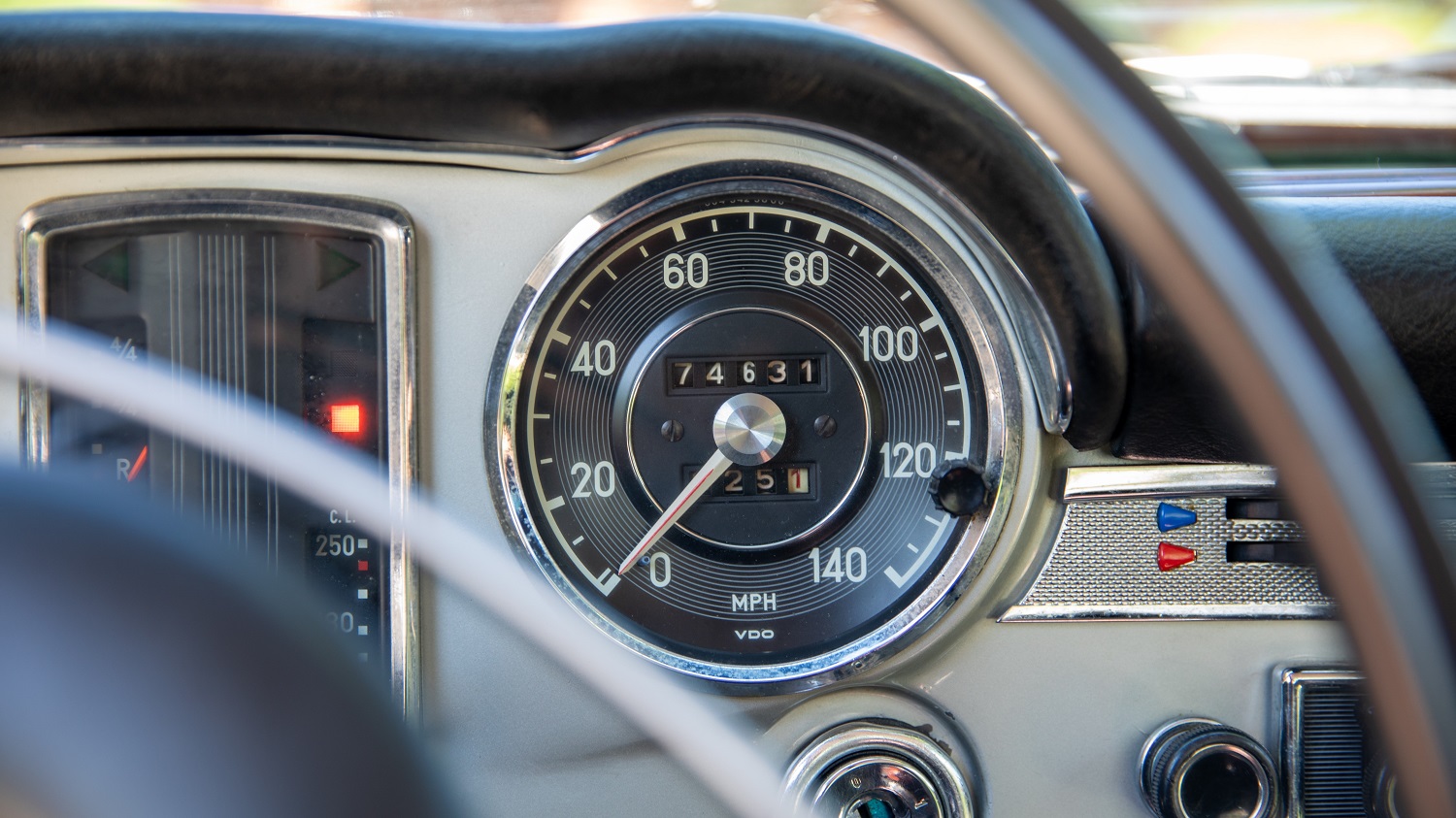
Instrumentation consists of a 140-mph speedometer, 7,000-rpm tachometer, and displays for the oil pressure, temperature, and fuel level. The odometer shows 74,631 miles, but the title for this vehicle indicates it’s mileage-exempt.
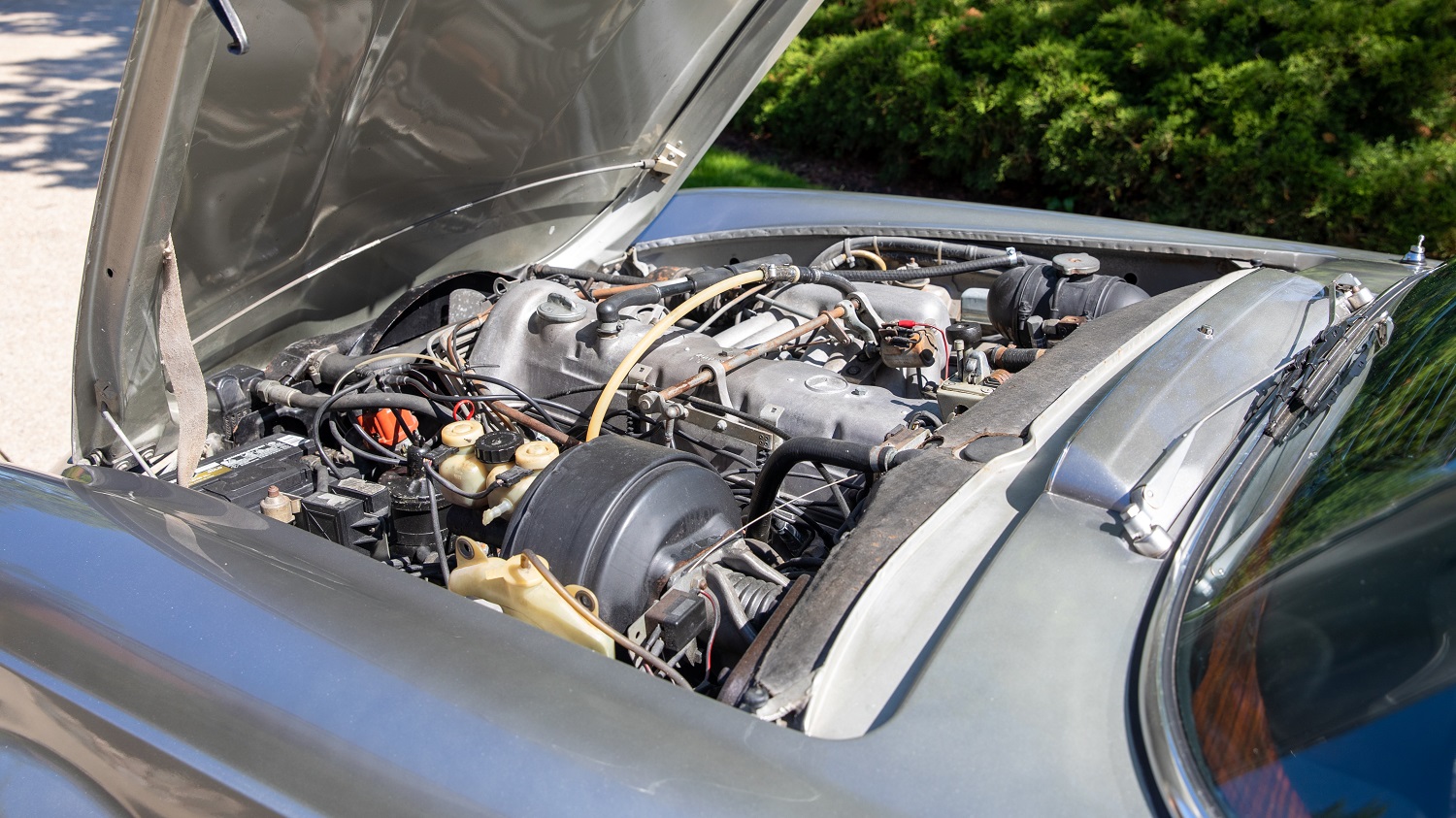
Under the front-hinged hood is a 2.8-liter I6 equipped with Bosch mechanical fuel injection, which helped it achieve factory ratings of 170 horsepower and 177 lb-ft of torque (both net). The M130 engine’s output reaches the road through a four-speed automatic transmission and a 4.08:1 rear end. Power disc brakes keep this SL on the right path.
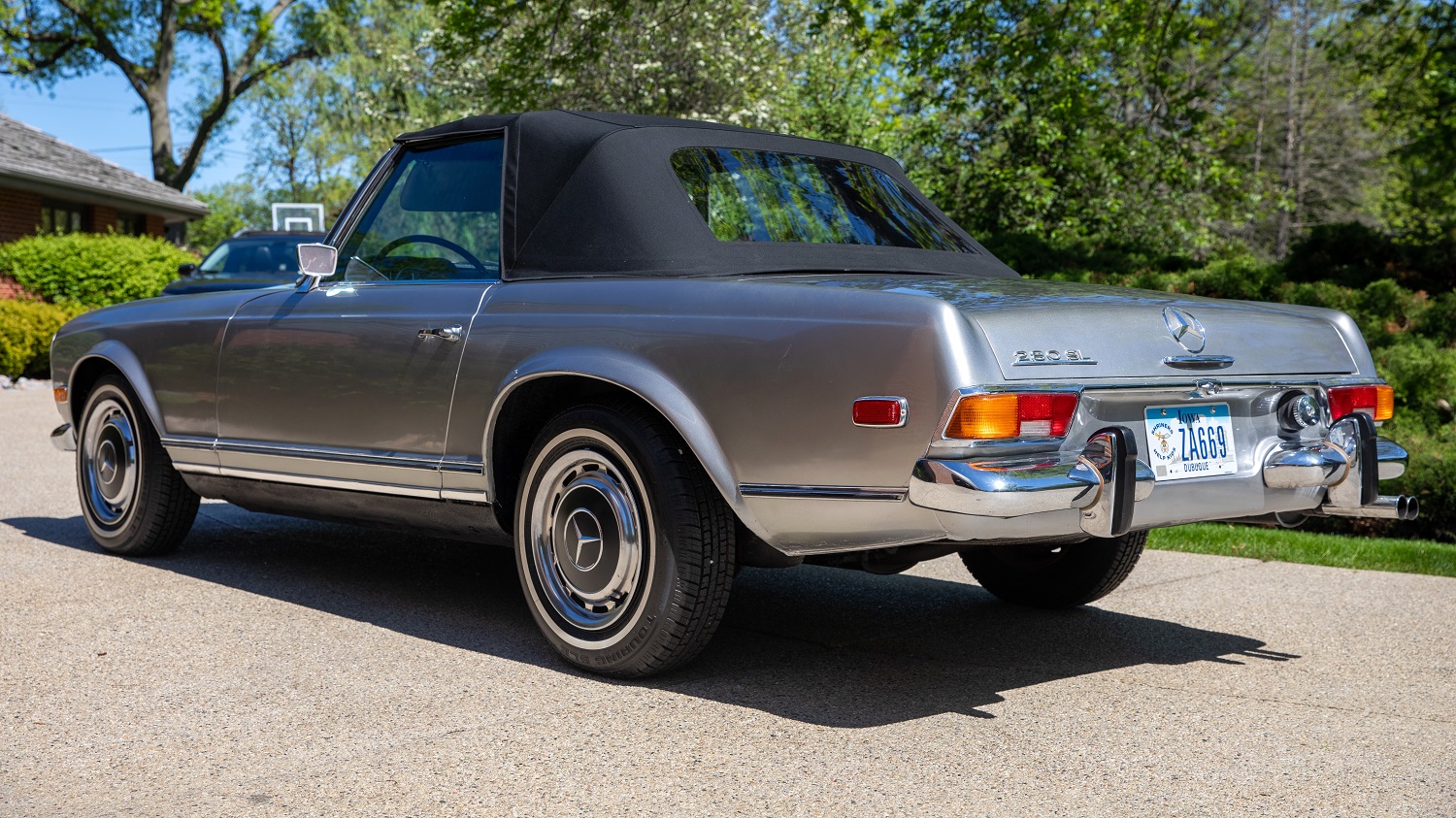
If you want to be headed toward getting this 1970 Mercedes-Benz 280SL, bid on it right now. The auction ends on Wednesday, June 11, 2025, at 11:30 a.m. (PDT).
Visit the AutoHunter listing for more information and a photo gallery
Having recently completed a 2,000-mile road trip in my 1994 Ford F-250, I can confirm that it wins an award as the least fuel-efficient vehicle I have ever owned (out of 50-plus vehicles). It is powered by a massive 7.5-liter (460ci) big-block V8. Even the truck’s original window sticker omitted city and highway EPA ratings; it just said, “Not Applicable to this Unit.”
I’m not sure how Ford got away without publishing the figures, but my real-world experience shows that the truck achieves between 8 and 10 miles per gallon on average. Hey, at least it has dual tanks with a combined fuel capacity of 37 gallons. And when it comes to brute power and towing, a thirsty V8 is always up to the task.
The Pick of the Day is a 1989 Ford-F250 XLT Lariat pickup listed for sale on ClassicCars.com by a private seller in Huntington, New York.
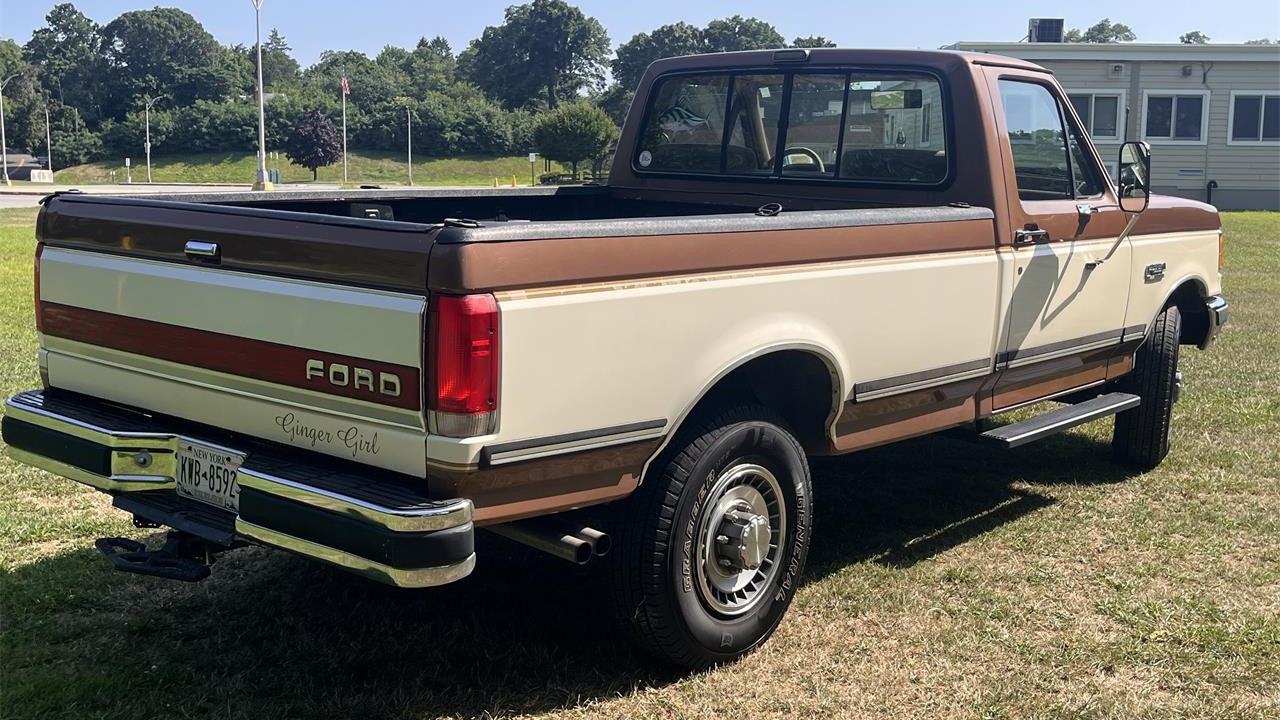
Drivetrain details are not specifically called out in the listing, but based on the photos, we can narrow things down. The “EFI” badge on the front end tells us the truck is two-wheel drive and has a fuel-injected gasoline engine. More than likely, it has 5.8-liter or 7.5-liter V8. Mechanically, a great deal of work has been performed during the seller’s ownership, including replacement of the fuel tanks and pumps, fuel transfer valve, steering box, tires, spark plug wires, transmission pan gasket, timing chain cover gasket and water pump.

The Desert Tan Metallic and Colonial White exterior color combination look a lot like Jason’s F-Series that we featured on The Journal a couple of years ago. Exterior features include running boards, swing-away tow mirrors, pinstriping, a sliding rear window and a drop-in bedliner. The condition is extraordinary. The seller says the paint on the hood and roof has been resprayed, so that explains part of it. The tan cloth bench seat is in nice condition, and the cab is well-optioned with niceties like power windows, power door locks and (newly converted) air conditioning.

All in all, this “bricknose” eighth-generation F-Series is one of the nicest I’ve seen in the marketplace in recent months. For anyone looking for a classic, reliable work truck with a nostalgic feel, look no further. What it lacks in fuel economy, it more than makes up in heavy-hauling capability.
“The truck is 100% ready to go,” the listing concludes. “Drives great.”
The asking price is $14,000.
Click here to view this Pick of the Day on ClassicCars.com
This ’29 Ford Model A is a steel-bodied highboy roadster that was refreshed in 2024 by the seller, who believes the car had been raced in California in the 1950s. It is powered by 239ci 59AB Flathead V8 with Sharp heads, an Isky cam, chromed Red’s Headers, and three Stromberg 97s with Lucky Burton race scoops, and the engine is backed by a ’39 Ford transmission. The car rides on 16″ ’35 wire wheels and has Houdaille front shocks, a Model T buggy rear spring, and juice brakes, and details include Arrow 775H headlights, a ’32 grille and dash, a louvered hood, a ’39 Ford column drop, an F1 steering box, a chopped windshield, and more as described below. Acquired by the seller in 2022. This Model A is now offered with a clean Arizona title in the seller’s name.

The steel body was repainted, wet-sanded, and buffed in 2024. It has a chopped windshield, and a ’40s jewel was mounted in the rechromed single A taillight. Chopped ’31 A roadster top bows are included, but no top has been made. The woodwork was smoothed, stained dark walnut, and cleared with a satin finish.

Arrow 775H are mounted on hand-bent and chromed stands made from an A headlight bar, and the painted ’32 grille has a polished surround.

The 239ci 59AB flathead was rebuilt with an Isky cam, polished Sharp heads, and a polished Sharp 3×2 intake with three rebuilt Stromberg 97s topped by Lucky Burton race scoops. A Powergen alternator and Stromberg e-Fire distributor were utilized along with a US Radiator brass radiator, and the Red’s Headers are chromed.

Staggered Firestone bias-ply tires are mounted on the ’35 Ford 16″ wire wheels. Juice brakes were fitted at all four corners, and the rear drop was done with a Model T buggy spring. The rebuilt and polished steering box is from a Ford F1, and the Houdaille front shocks were rebuilt by Houdaille Shock in New Hampshire.

The unfinished interior has a bench seat with a rebuilt frame that tilts forward for under-seat storage, and the upholstery is whiskey brown. F1-sourced clutch and brake pedals were utilized along with a ’32 throttle pedal, and aircraft-style seat belts were fitted.

The center of the ’39 steering wheel was rechromed, and it is mounted on a ’39 drop column with a push-button starter. The dash is from a ’32, and ’36 Pontiac gauges are fitted but not connected. The beehive Bakelite shift knob is painted black and topped by a jewel. The turn signals are not connected.

The seller notes a cloth wiring harness was used along with a Tanks, Inc gas tank, and the battery was replaced.

The car has a ’39 Ford three-speed and a Borg Warner torque-tube overdrive, though the latter is not currently connected. The straight pipes dump ahead of the rear axle.

The car is titled as a 1929 Ford using VIN A1424381.
Long before online car configurators and interactive dealership portals, automotive enthusiasts explored an entirely different method of purchasing their dream rides—through mail-order catalogs and telephone orders.
In an era where showrooms were limited and niche carmakers lacked extensive dealer networks, buying directly from the manufacturer via mail or phone was often the only option.
This unconventional approach not only added an air of exclusivity but also fostered a unique connection between the buyer and the manufacturer.
From iconic kit cars and limited-edition sports cars to quirky electric vehicles, we’ve rounded up 15 fascinating automobiles you could only acquire with a stamp and an envelope or by picking up the phone.
Throughout automotive history, Porsche has quietly lent its engineering prowess to a wide array of vehicles sold under different badges. These collaborations, often shrouded in secrecy, resulted in cars that combined another manufacturer’s styling and brand identity with Porsche’s celebrated chassis dynamics, powertrain expertise, and meticulous attention to detail.
From rugged off-road workhorses to high-performance hot hatches, this list highlights ten notable vehicles engineered by Porsche but marketed by other companies. Each model bears Porsche’s hallmark precision while wearing a different crest. Read on to discover the fascinating blend of collaboration and engineering excellence that blurred the lines between automakers.
1. DKW Munga (1956-1968)
Short for “Mehrzweck-Universal-Geländefahrzeug,” the DKW Munga emerged in 1956 as West Germany’s answer to a versatile military and civilian 4×4. Auto Union entrusted Porsche with designing its underlying structure, leading to a lightweight tubular steel frame and torsion-bar front suspension that delivered impressive off-road capability for its era.
Powered by a 900 cc two-stroke, three-cylinder engine producing about 34 hp, the roughly 1,000 kg (2,205 lb) Munga could tackle muddy trails and steep inclines, reaching around 82 km/h (51 mph). Over its twelve-year production run, more than 46,000 units served the Bundeswehr, police forces, and farmers, demonstrating Porsche’s early mastery of rugged terrain dynamics.
